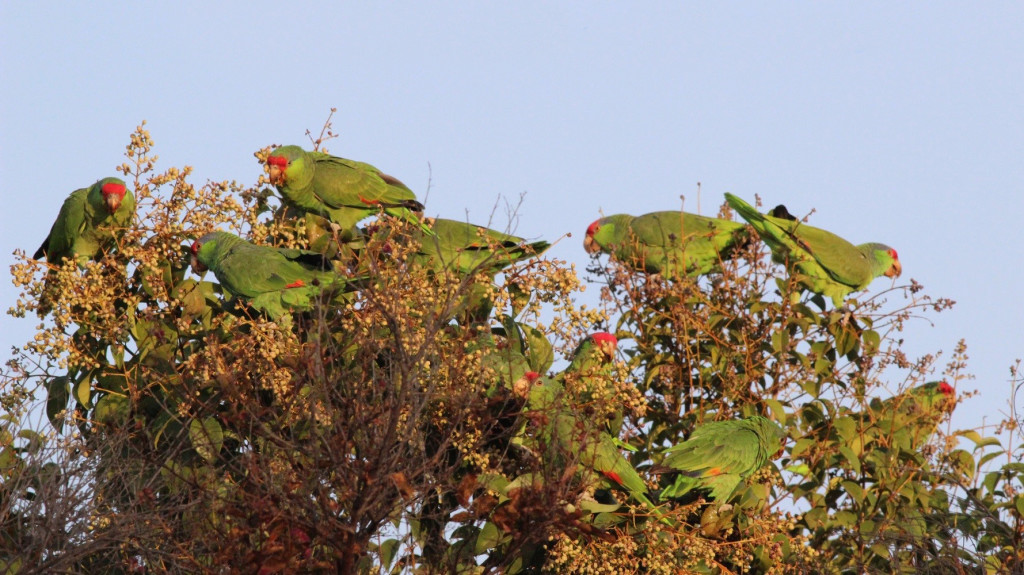A look at the varied diets which have enabled California’s parrots to successfully thrive for many decades.
While documenting and monitoring the diverse naturalized parrot flocks throughout California, parrot flocks were encountered in many cities ranging from southern San Diego Co. to as far north as Sacramento and as east as Bakersfield, CA . As thirteen species of established parrots were successfully located, I have documented these parrots behavior including their interactions within their flock and with other wildlife, communicative calls: (original and mimicked) , preferred nesting sites, human involvement , geographical ranges, population numbers, noted hybrids, and extensive diets. While several of these mentioned aspects helped enable the survival of these parrots, It is unarguably the extensively varied diets which play the key role in their successful survival.
It comes as no surprise that many residential households have regularly witnessed parrots thriving well in their neighborhoods for decades. This is undoubtedly due to the abundance of imported landscaping trees which have provided these parrots with the consistent year-round diverse diets they need. Having their fair share of options and portions, these survivors have learned what to eat and what to avoid. These parrots can also recognize when a ripe fruit is edible, or when a mature or ripened seed pod becomes unedible, i.e. Carob tree (Ceratonia siliqua). While some have learned where to locate nontoxic flowers rich in nectar and pollen, others have also learned which plants to extract juices for hydration purposes. Furthermore a few species have also been seen routinely consuming bark particles from selected trees.
It is important to note that many mentioned foods are not currently discussed in aviculture. Therefore, the harvesting of these foods for a pet is strictly left at the owner’s discretion. A few featured plants shown being consumed such as Avocado, and Giant Bird of Paradise are currently listed as toxic foods for parrots under aviculture guidelines. I discourage any feeding of these plants until further research is done to determine their safety. For those who still choose to feed their pet parrots any of the other items, I recommend washing any item thoroughly before offering it and to avoid harvesting from the ground for possible pesticide poisoning. With the exception of the Silk Floss fruit (Ceiba speciosa) fed on exclusively by Yellow Chevroned Parakeets, the vast majority of the items are consumed by different parrot species and do not appear to be species specific. These shared foods are consumed by many species both closely and distantly related. As food is considered to be the universal language of mankind, this rule also appears to apply to California’s parrots as well. Here is an unprecedented look at sixty eight of the diverse foods fed on by California’s parrots.

